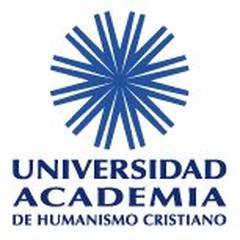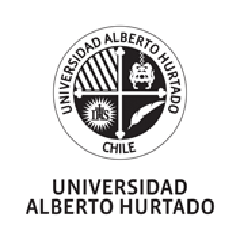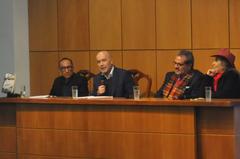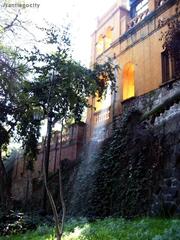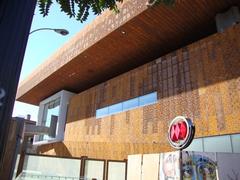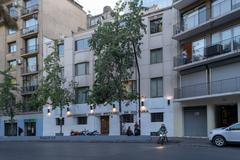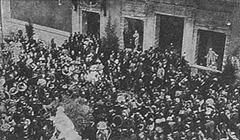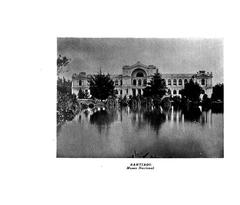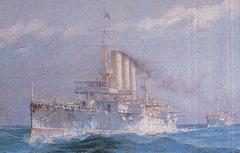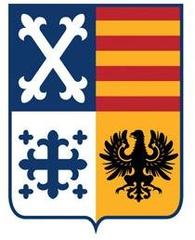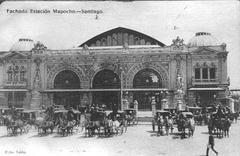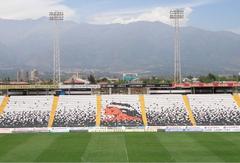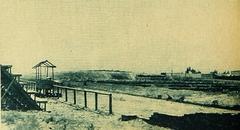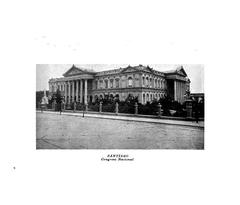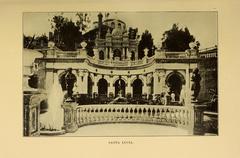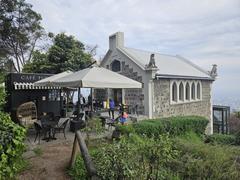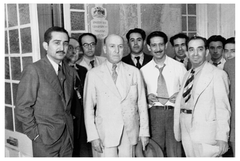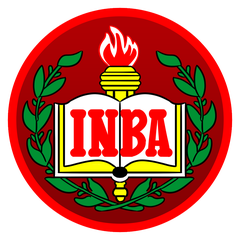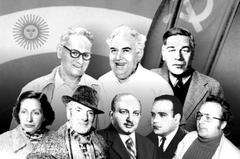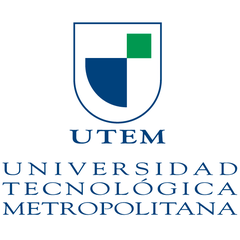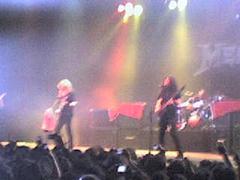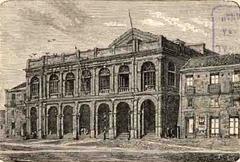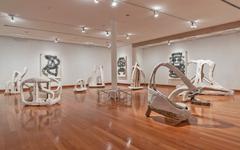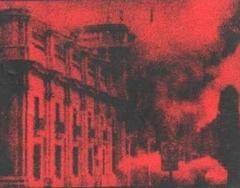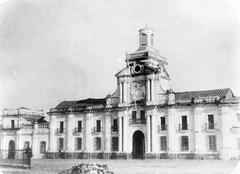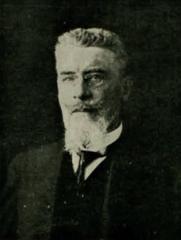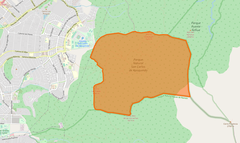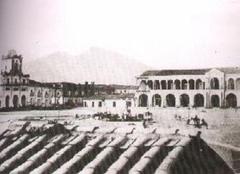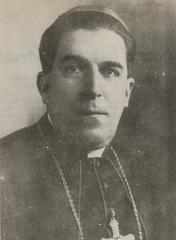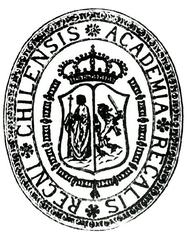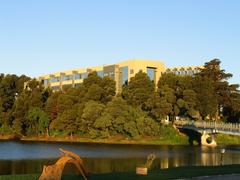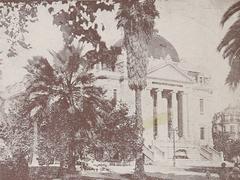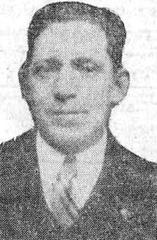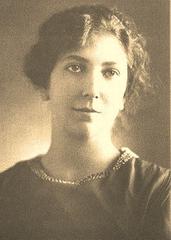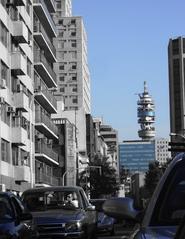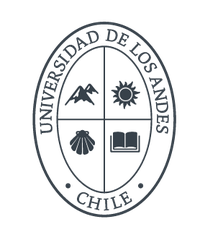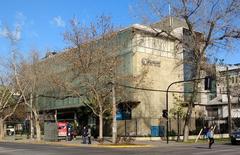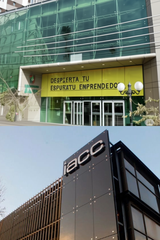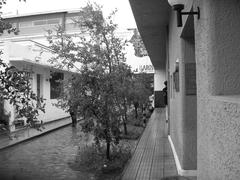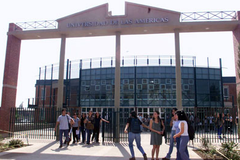Visiting Mercado Central in Santiago: Hours, Tickets, and Tips
Date: 17/07/2024
Introduction
Situated in the vibrant heart of Santiago, Chile, Mercado Central is more than just a market; it is a living testament to the city’s rich cultural and economic history. Since its inauguration on September 15, 1872, this historic site has been a cornerstone of Santiago’s daily life, designed by architect Fermín Vivaceta with an iron structure fabricated in England and assembled in Chile (Santiago Tourist). The market’s architectural marvel, featuring a central dome supported by intricate iron columns and beams, was designed by the renowned French architect Gustave Eiffel, providing both aesthetic appeal and functional benefits like improved ventilation and natural lighting (Chile Travel).
Mercado Central has evolved over the years from being the primary wholesale market for fresh produce, seafood, and meat to a bustling hub of vendors selling artisanal goods, traditional Chilean foods, and souvenirs (Lonely Planet). The market is particularly renowned for its seafood offerings, with numerous stalls and restaurants serving dishes like ceviche, paila marina, and congrio frito, showcasing Chile’s coastal bounty (Culture Trip).
Over the years, Mercado Central has also played a pivotal role during significant historical events, including periods of political unrest like the 1973 military coup, where it served as a meeting point for activists and community leaders (BBC). Recent renovations have aimed to preserve the market’s historical integrity while modernizing its amenities, ensuring that Mercado Central remains a beloved landmark (Santiago Official).
Table of Contents
- Introduction
- Historical Significance and Cultural Heritage
- Visitor Information
- Culinary Traditions
- Souvenirs and Shopping
- Accessibility
- Special Events and Guided Tours
- Nearby Attractions
- Local Etiquette
- Emergency Contacts
- FAQ
- Conclusion
Historical Significance and Cultural Heritage
Origins and Early History
Mercado Central’s origins date back to the late 19th century when it was constructed under the guidance of architect Fermín Vivaceta. The market’s iron structure, fabricated in England and assembled in Chile, was innovative for its time and reflects the European influence on Chilean architecture during the 19th century (Santiago Tourist).
Architectural Significance
The architectural significance of Mercado Central cannot be overstated. Designed by the renowned French architect Gustave Eiffel, the market’s iron framework is a marvel. The central dome, supported by intricate iron columns and beams, creates an open and airy space that is both aesthetically pleasing and functional, providing improved ventilation and natural lighting (Chile Travel).
Economic and Cultural Impact
Since its inception, Mercado Central has been integral to Santiago’s economy. Initially serving as the primary wholesale market for fresh produce, seafood, and meat, it has evolved to include vendors selling artisanal goods, traditional Chilean foods, and souvenirs, making it a popular tourist destination (Lonely Planet).
Culturally, Mercado Central is a microcosm of Chilean life. It is renowned for its seafood, with numerous stalls and restaurants offering dishes such as ceviche, paila marina, and congrio frito, showcasing Chile’s coastal bounty (Culture Trip).
Historical Events and Milestones
Over the years, Mercado Central has been a witness to significant historical events. In the early 20th century, it became a hub for social and political gatherings, playing a crucial role during periods of political unrest like the 1973 military coup. The market served as a meeting point for activists and community leaders (BBC).
Recent renovations have aimed to preserve the market’s historical integrity while modernizing its amenities. These efforts include structural repairs, the installation of modern facilities, and enhanced safety measures, ensuring that Mercado Central remains a beloved landmark (Santiago Official).
Recognition and Awards
In 1984, Mercado Central was declared a National Monument by the Chilean government, underscoring its cultural and historical significance. It has also been recognized internationally, with National Geographic naming it one of the world’s best markets in 2012 (National Geographic).
Visitor Information
Visiting Hours
Mercado Central is open daily from 6:00 AM to 5:00 PM. The best time to visit is during the morning hours, especially between 9:00 AM and 11:00 AM, when the market is bustling with activity and the freshest seafood is being delivered and displayed.
Entry Fees and Tickets
Entry to Mercado Central is free. However, guided tours are available and may have associated costs.
How to Get There
Mercado Central is conveniently located in the heart of Santiago, at the intersection of San Pablo and Puente streets. The market is easily accessible via public transportation. The nearest metro station is “Puente Cal y Canto” on Line 2 (Yellow Line), which is just a short walk from the market. For those preferring to travel by bus, several routes pass close to the market. Taxis and ride-sharing services like Uber are also readily available.
Language and Currency
While Spanish is the primary language spoken at Mercado Central, many vendors have a basic understanding of English, especially those who frequently interact with tourists. The official currency in Chile is the Chilean Peso (CLP). Most vendors at Mercado Central accept cash, and it is advisable to carry small denominations for easier transactions. Some of the larger restaurants and shops may accept credit and debit cards, but it is always best to confirm beforehand. ATMs are available within the market and nearby areas for cash withdrawals.
Safety and Security
Mercado Central is generally safe for tourists, but it is always wise to take standard precautions. Keep an eye on your belongings, especially in crowded areas, to avoid pickpocketing. It is also recommended to avoid carrying large amounts of cash or wearing expensive jewelry.
What to Wear
Comfortable clothing and footwear are essential when visiting Mercado Central, as you will likely spend a significant amount of time walking and exploring. The market can get quite warm, especially during the summer months, so lightweight, breathable fabrics are recommended. A hat and sunscreen are also advisable to protect against the sun.
Hygiene and Health
Mercado Central is known for its fresh seafood, and while the market maintains high standards of cleanliness, it is always good practice to ensure that the food you consume is cooked thoroughly. If you have any dietary restrictions or allergies, communicate them clearly to the vendors or restaurant staff.
Photography
Photography is generally allowed within Mercado Central, and the vibrant stalls and bustling atmosphere provide excellent photo opportunities. However, it is courteous to ask for permission before taking close-up shots of vendors or their products. Some vendors may request a small fee for photographs.
Culinary Traditions
Seafood Specialties
Mercado Central is renowned for its seafood, and there are several dishes that you should not miss:
- Caldillo de Congrio: A traditional Chilean fish stew made with conger eel, vegetables, and spices.
- Empanadas de Mariscos: Seafood empanadas filled with a variety of fresh shellfish.
- Paila Marina: A hearty seafood soup featuring a mix of shellfish, fish, and sometimes even sea urchins.
Local Dining Spots
- Donde Augusto: One of the most famous restaurants in Mercado Central, known for its fresh seafood and vibrant atmosphere.
- Tio Lucho: Another popular spot offering a wide range of Chilean seafood dishes.
Souvenirs and Shopping
In addition to food, Mercado Central offers a variety of souvenirs and local products. Popular items include:
- Handcrafted Jewelry: Made from lapis lazuli, a deep-blue semi-precious stone found in Chile.
- Local Spices and Herbs: Such as merken, a smoked chili pepper used in Chilean cuisine.
- Artisanal Products: Including pottery, textiles, and wooden crafts.
Bargaining is not common practice in Chile, but some vendors may be open to negotiating prices, especially if you are purchasing multiple items.
Accessibility
Mercado Central is relatively accessible for visitors with mobility issues. The main entrances are wheelchair-friendly, and the market’s layout is mostly flat, with wide aisles that accommodate wheelchairs and strollers. However, some areas may be crowded, so it is advisable to visit during off-peak hours for a more comfortable experience.
Special Events and Guided Tours
Mercado Central hosts various events throughout the year, including seafood festivals and cultural performances. Guided tours are available and can provide a deeper understanding of the market’s history and offerings.
Nearby Attractions
While visiting Mercado Central, you can explore nearby attractions such as:
- Plaza de Armas: Santiago’s main square, located just a short walk from the market. It is surrounded by historic buildings and offers a glimpse into the city’s colonial past.
- Museo Chileno de Arte Precolombino: A museum dedicated to pre-Columbian art and artifacts, located a few blocks from the market.
- La Moneda Palace: The presidential palace of Chile, which offers guided tours and a chance to learn about the country’s political history.
Local Etiquette
When visiting Mercado Central, it is important to respect local customs and etiquette. Greet vendors with a friendly “Hola” (Hello) or “Buenos días” (Good morning). Chileans are generally polite and appreciate courteous behavior. If you are unsure about something, do not hesitate to ask for assistance; locals are often willing to help.
Emergency Contacts
In case of emergencies, it is useful to have the following contact numbers:
- Police: 133
- Ambulance: 131
- Fire Department: 132
Additionally, the nearest hospital to Mercado Central is the Hospital Clínico Universidad de Chile, located approximately 2 kilometers away.
FAQ
What are the visiting hours of Mercado Central?
- Mercado Central is open daily from 6:00 AM to 5:00 PM.
How much do tickets to Mercado Central cost?
- Entry is free, but guided tours may have associated costs.
Are there guided tours available?
- Yes, guided tours are available and can provide a deeper understanding of the market’s history and offerings.
Conclusion
Mercado Central stands as a symbol of Santiago’s rich history and cultural diversity. Its architectural beauty, economic significance, and cultural impact make it a must-visit destination for anyone traveling to Chile. As you wander through its bustling aisles, you will not only find a variety of goods and foods but also a living history that continues to shape the identity of Santiago and its people. For those looking to explore more of Santiago, nearby attractions such as Plaza de Armas, Santiago Metropolitan Cathedral, and the Museum of Memory and Human Rights provide additional opportunities to immerse oneself in the local culture.
Today, Mercado Central continues to attract thousands of visitors each year, celebrated for its ability to adapt to changing times while preserving its historical roots (Fodor’s Travel). By keeping in mind the practical tips and insights provided in this guide, visitors can ensure a safe, enjoyable, and memorable experience at Mercado Central. For more travel tips and updates, download the Audiala mobile app and follow us on social media.
References
- Discover the History and Visiting Hours of Mercado Central in Santiago, 2023, Santiago Tourist source
- Discover the History and Visiting Hours of Mercado Central in Santiago, 2023, Chile Travel source
- Discover the History and Visiting Hours of Mercado Central in Santiago, 2023, Lonely Planet source
- Discover the History and Visiting Hours of Mercado Central in Santiago, 2023, Culture Trip source
- Discover the History and Visiting Hours of Mercado Central in Santiago, 2023, BBC source
- Discover the History and Visiting Hours of Mercado Central in Santiago, 2023, Santiago Official source
- Discover the History and Visiting Hours of Mercado Central in Santiago, 2023, National Geographic source
- Discover the History and Visiting Hours of Mercado Central in Santiago, 2023, Fodor’s Travel source
